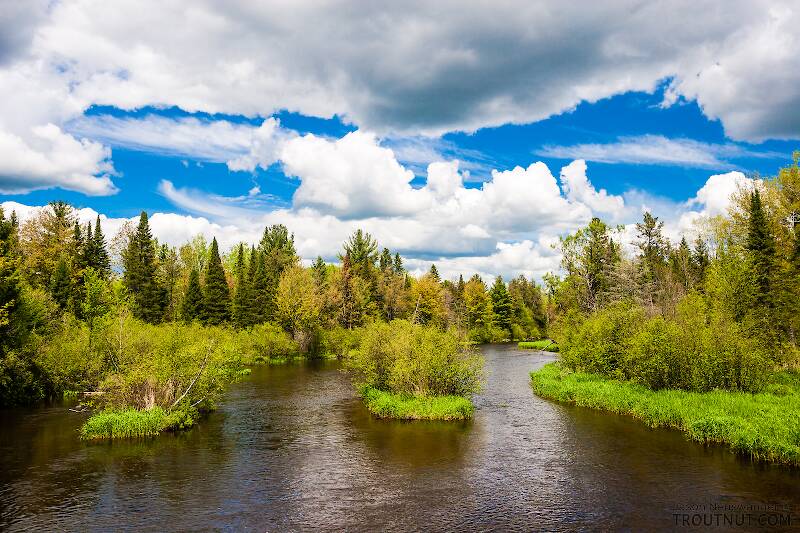
Hex Mayflies
Hexagenia limbata
The famous nocturnal Hex hatch of the Midwest (and a few other lucky locations) stirs to the surface mythically large brown trout that only touch streamers for the rest of the year.
Featured on the forum

This is an interesting one. Following the keys in Merritt R.W., Cummins, K.W., and Berg, M.B. (2019) and Jacobus et al. (2014), it keys clearly to Ephemerella. Jacobus et al provide a key to species, but some of the characteristics are tricky to interpret without illustrations. If I didn't make any mistakes, this one keys to Ephemerella mucronata, which has not previously been reported any closer to here than Montana and Alberta. The main character seems to fit well: "Abdominal terga with prominent, paired, subparallel, spiculate ridges." Several illustrations or descriptions of this holarctic species from the US and Europe seem to match, including the body length, tarsal claws and denticles, labial palp, and gill shapes. These sources include including Richard Allen's original description of this species in North America under the now-defunct name E. moffatae in Allen RK (1977) and the figures in this description of the species in Italy.

Troutnut is a project started in 2003 by salmonid ecologist Jason "Troutnut" Neuswanger to help anglers and
fly tyers unabashedly embrace the entomological side of the sport. Learn more about Troutnut or
support the project for an enhanced experience here.
Caddisfly Genus Neureclipsis (Little Red Twilight Sedges)
This genus is reported to be important on trout streams sometimes, but not often. The only species individually mentioned is not considered to be important.
Genus Range
Larva & pupa biology
Current speed: Slow
Shelter type: Nets
The carnivorous larvae string their trumpet-shaped nets on debris and rooted plants poking up from the bottom. They arrange them vertically on the object, each net filtering its victims from one little slice of the water column.
Start a Discussion of Neureclipsis
References
- Jacobus, L. M., Wiersema, N.A., and Webb, J.M. 2014. Identification of Far Northern and Western North American Mayfly Larvae (Insecta: Ephemeroptera), North of Mexico; Version 2. Joint Aquatic Science meeting, Portland, OR. Unpublished workshop manual. 1-176.
- LaFontaine, Gary. 1981. Caddisflies. The Lyons Press.
- Merritt R.W., Cummins, K.W., and Berg, M.B. 2019. An Introduction to the Aquatic Insects of North America (Fifth Edition). Kendall/Hunt Publishing Company.
Caddisfly Genus Neureclipsis (Little Red Twilight Sedges)
Taxonomy
Species in Neureclipsis
Neureclipsis crepuscularis
0
0
Species in Neureclipsis: Neureclipsis crepuscularis
5 species (Neureclipsis bimaculata, Neureclipsis melco, Neureclipsis piersoni, Neureclipsis timesis, and Neureclipsis validus) aren't included.

